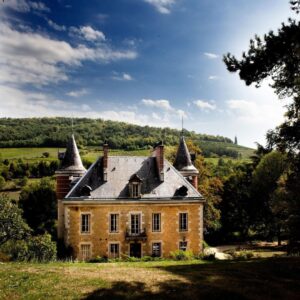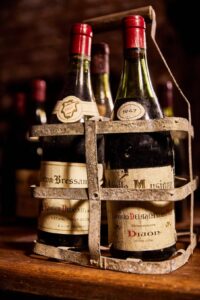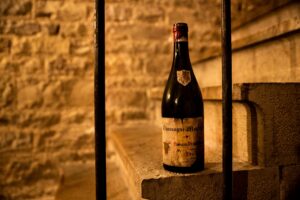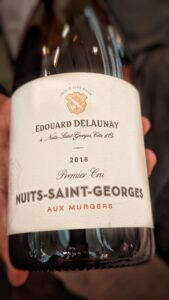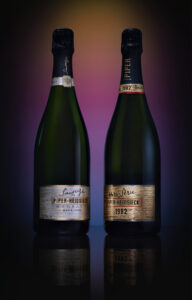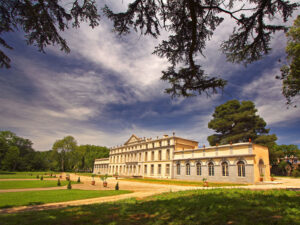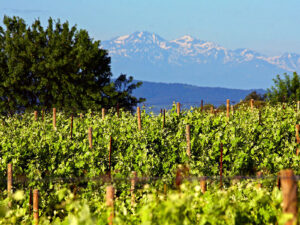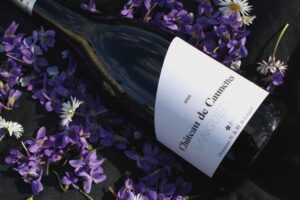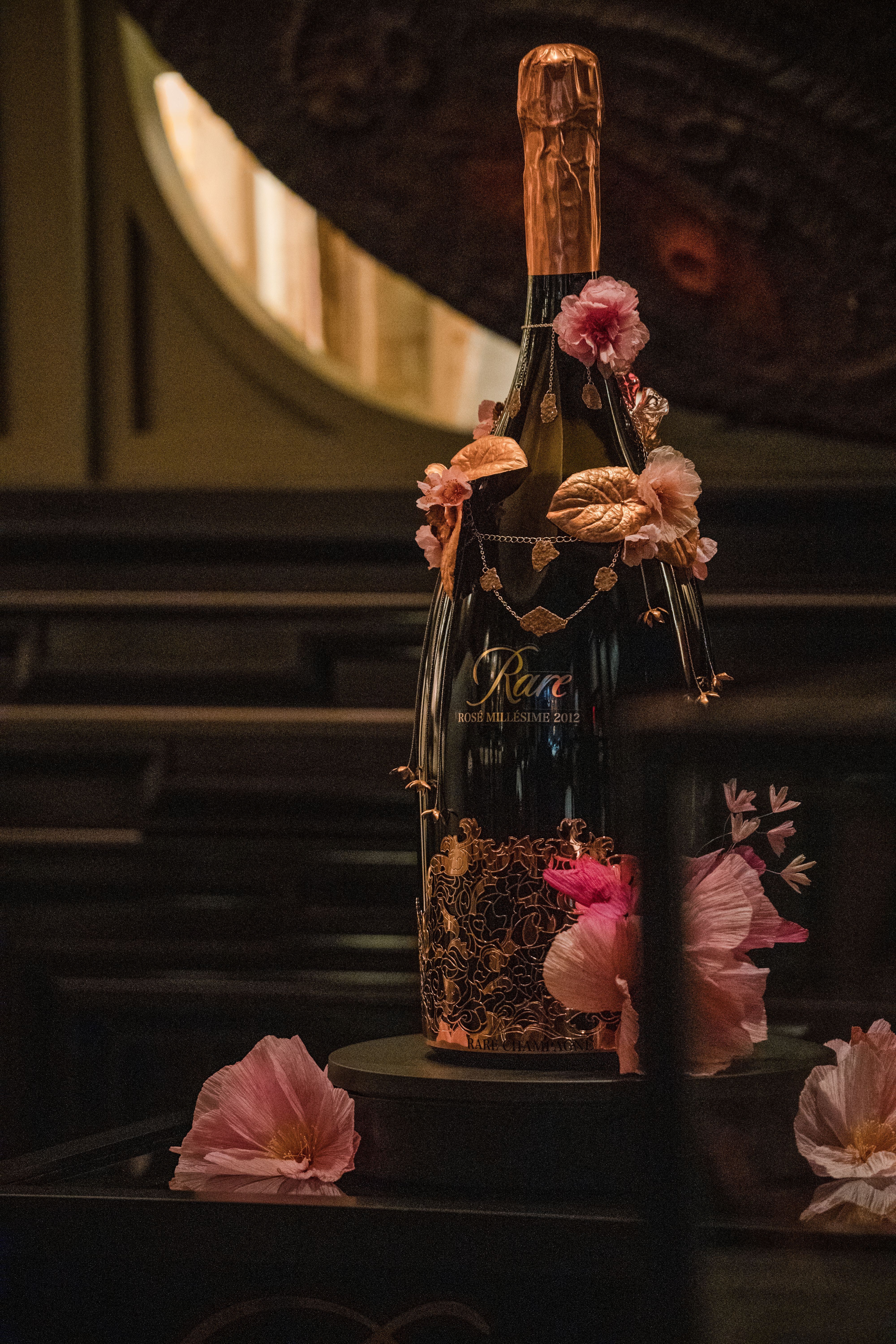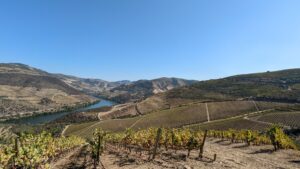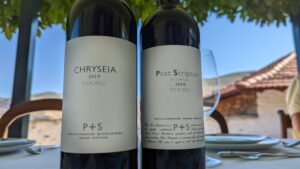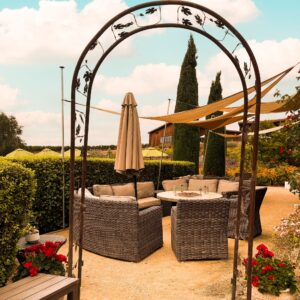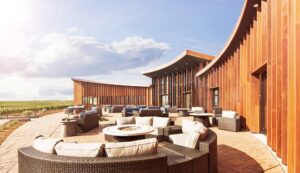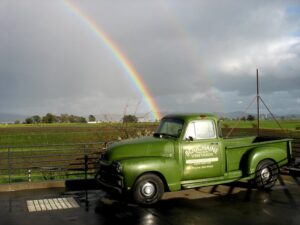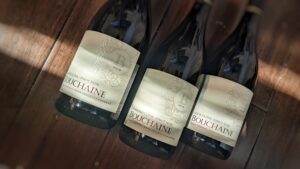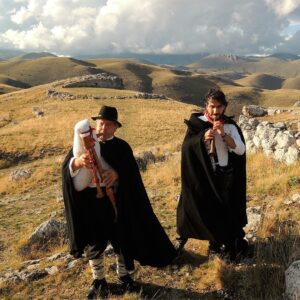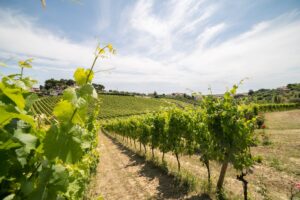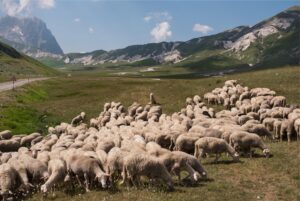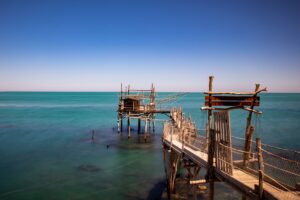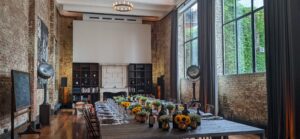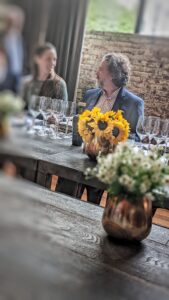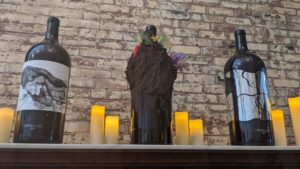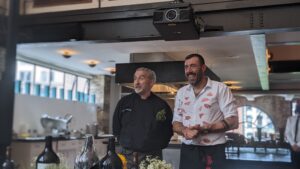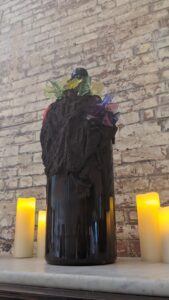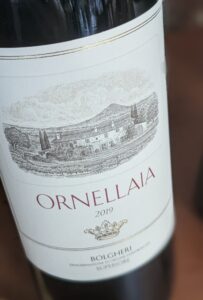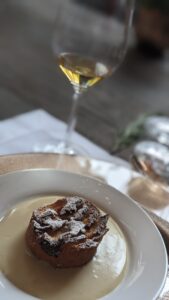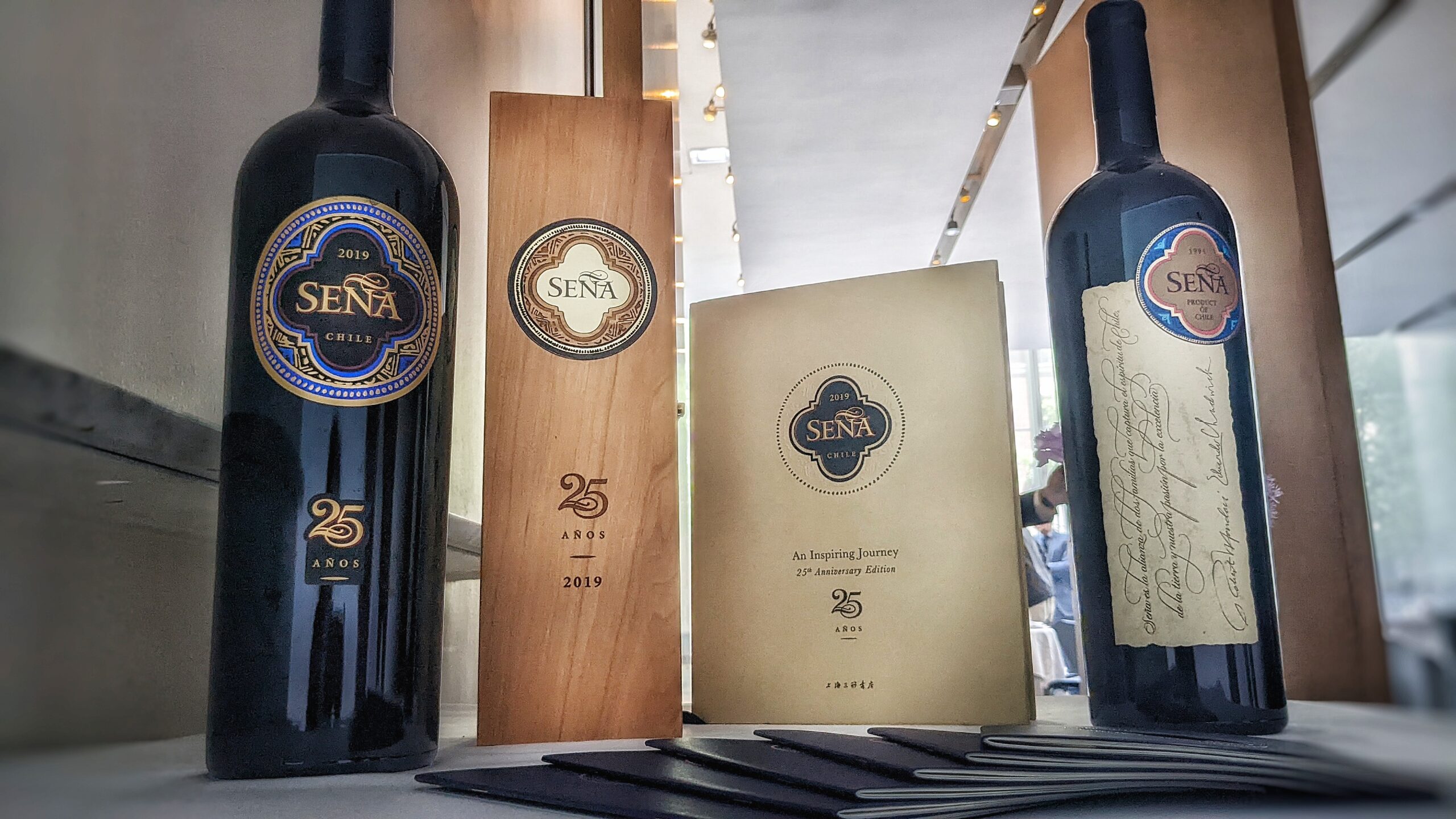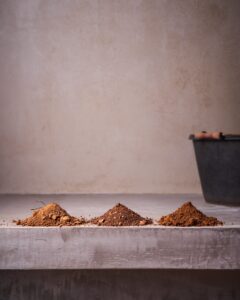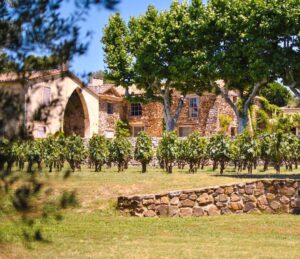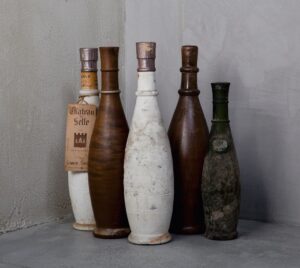The surreal California coastline seems like a dream to a young man from Burgundy, France, who was swept away by the place, the wines and the people who have a casual, warm temperament balanced by a fast-paced creative energy. He became completely inspired by the idea that anything is possible in this stunning paradise while meeting people from all over the world who have moved to “The Golden State” to live their dreams. The 24-year-old young man was to stay two to three years in California just after having graduated from the University of Dijon to gain international experience so he could return to his family’s wine estate, Edouard Delaunay, to work with his father, hopefully bringing valuable contributions back from his time spent in the U.S.
“You should come back! Your father is tired and he needs help!” said the young man’s mother on the phone one day after he had barely spent a year in California. And so, he didn’t question it but jumped on a plane back home where he would help his father. But something wasn’t right as the young man’s father did not seem like the same man that he was before he left. And his father’s ability to perform everyday tasks seemed to get more difficult for him as time went on; within a few months, his father was diagnosed with Alzheimer’s. While mourning the loss of the father he knew, this young man needed to take over quickly during an unfortunate economic time in 1991. It was during the first Gulf War and inflation was high with a significant increase in the cost of living. Moreover, Burgundy’s property taxes had already become exorbitant and this young man needed to make sure his parents had enough money to live out the rest of their retirement.
So the young man reached out to one of his father’s longtime friends, Jean-Claude Boisset, who had already bought many vineyards and wineries in Burgundy to purchase Edouard Delaunay. That way, the young man’s parents would have a nice nest egg, even if it left him with nothing. So he decided to move down to the South of France with his future wife, a winemaker from the Rhône Valley (just south of Burgundy). She had heard that the Languedoc wine region in the South was the best place for young people with zero resources to start a winemaking business.
No Money But a Strong Work Ethic
That young man was Laurent Delaunay and his family’s estate, Edouard Delaunay, was named after the founder and his great-grandfather; in an ideal world, he would have been the fifth generation taking over. But life had other plans, so Laurent, with the help of his wife Catherine, went down to the Languedoc to figure out how they could make wine with “no winery, no vineyards, no money, no anything.”
“We were able to convince some local people to allow us to make our own wines in their wineries,” said Laurent. And with lots of hard work, they made wine while quickly developing new markets around the world, especially in the U.S., from 1995 to 2003. Then, one day, he received a call from an old friend back home as his friend’s father wanted to retire – he was an owner of a small company in Burgundy that distributed and marketed the wines of small Burgundy producers. It was an excellent opportunity to find a way back to Burgundy. Even though he and his wife had successful businesses in the South and they had very little time to dwell on the past, Laurent wanted to renew that connection with what he lost. They were back living in Burgundy and grew their business to represent 180 Burgundy producers, becoming the largest distributor of small, independent domaines1. But as Laurent got older, frustration started to build as he wasn’t making his own wines in Burgundy. He had a few opportunities to buy some vineyards and then a négociant2 house but none of those deals worked out and it didn’t seem right in his gut.
Then, one day, as fate would have it, Laurent saw Jean-Claude Boisset at a restaurant in the Burgundy village of Nuits-Saint-Georges and after Jean-Claude’s guests left, Laurent took that serendipitous moment to invite Jean-Claude to join him for coffee. At one point in their conversation, Laurent mentioned his old family’s estate that he sold to Jean-Claude and that he was seeing it on the market less and less, which Jean-Claude admitted that they had bought a lot of wineries lately and they hadn’t given the Edouard Delaunay name the attention that it needed. Laurent asked if he could buy his family’s estate name and winery back and Jean-Claude agreed as he always respected what Laurent did for his parents. But Jean-Claude would not sell back the vineyards, which probably would have been impossible for Laurent to buy anyways as some of their vineyards were in the very expensive village of Chambolle-Musigny.
Edouard Delaunay
When Laurent walked back into his family winery, he was struck by the intense emotions he felt that were buried deep within him. Seeing all the areas where he would play as a child and the smells that were unique to his family’s cellars brought back a flood of memories that mainly conjured all those times he spent with his father teaching him various winemaking techniques as an adolescent, an adolescent who dreamt of the day he would work side by side with his father as a man, which sadly never came to pass. At that moment, he swore he would bring Edouard Delaunay back to its glory by reestablishing the name among the top Burgundy wines of the world. So first, he completely renovated the winery with state-of-the-art equipment to accommodate small-volume, high-quality wine. Next, he hired his winemaker, Christophe Briotet, the chief winemaker and cellar master at the School of Viticulture in Beaune. Laurent’s father had always respected those chosen to be the chief winemaker at the School of Viticulture in Beaune as he felt they picked the people who had the best sense of how to express the terroir of the various vineyards in Burgundy.
The last thing he needed was to find grapes to buy, so Laurent reached out to everyone in his network to give him the contact information for the growers he most wanted to work with in Burgundy. And even though being from Burgundy himself, he knew that growers have long relationships with well-known winemakers and négociants2, and they would never jeopardize those relationships by working with a new producer in town who wanted to give a go at making Burgundy wine. But never say never, especially when it comes to certain circumstances, as all the producers were thrilled that he was resurrecting his family’s estate and they were more than happy to sell him grapes; some would even set aside the equivalent of a couple of barrels of their grapes from their top Grand Cru vineyards just for him because as they saw it, it was his “birthright.”
His first vintage was 2017 and they produced wines from 20 different appellations3 from the heart of Burgundy in the Côte de Nuits and Côte de Beaune. Laurent slowly increased their offerings over the years and today they make wines from around 30 different appellations. He has also taken on the task of expanding into the vineyards of the Hautes-Côtes de Nuits, where his winery is located, only three miles outside of the well-known red wine village of Nuits-Saint-Georges. He makes the case that the Côte de Nuits and Côte de Beaune, which makes up the most valuable Burgundy vineyard land known as the Golden Slope a.k.a. Côte-d’Or, were designated with incredible skill and accuracy by the monks many centuries ago yet no one has formally designated the vineyards of the Hautes-Côtes de Nuits. The Hautes-Côtes de Nuits has Jurassic limestone soil and the vineyards range in altitude between 980 to 1,300 feet; such altitude could be more ideal today with consistently warmer temperatures due to climate change.
Within a short time, Laurent’s winemaker, Christophe Briotet, has won awards from the International Wine Challenge (IWC), first winning Red Winemaker of the Year in 2020 and then White Winemaker of the Year in 2021. And last year, Laurent was asked to become the president of the Bourgogne Wine Board (BIVB), a non-for-profit organization of wine growers/winemakers and négociants that handle the present and future challenges of the Burgundy wine region. As someone who had already been through a multi-generational wine family’s worst nightmare of having to sell, as well as being a great businessman and marketer by building a successful business with global distribution out of nothing, there is no one better suited for the job. And so Laurent goes around the world talking to various wine enthusiast groups to inform and inspire them about the current state of Burgundy and where the wine region wants to go in the future. One of the things he would like to implement is to inform English-speaking countries like the U.S. that the name of Burgundy in French is Bourgogne (pronounced bor·gaan·yuh) as they are the only wine region in France where the name is changed in English.
Stronger Foundation Avoids Desperation
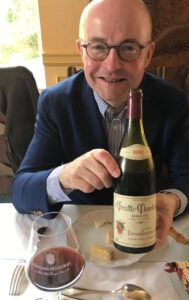
Photo Credit:
Edouard Delaunay
Laurent had everything anyone wanted: successful businesses, fulfilling work and a great partner in life with his talented wife Catherine, however, there was still something missing as one should never live in regret, especially when life forces one’s hand. He did the right thing when it came to taking care of his parents but it was undoubtedly a very unfair position for someone who wasn’t even 25 years old to have to navigate. Overwhelmed with a bad economy, escalating inflation and excessive property taxes, he needed more than ever to talk to his father and lean on him for advice and comfort. But his father needed him and the clock was ticking so he did what he had to do, only thinking of his parents.
And so, although it doesn’t make business sense to try to reinvigorate and reestablish a neglected family estate in a highly competitive Burgundy fine wine market, when one hears Laurent’s story, it makes complete sense, as a part of him was taken the day he sold.
Laurent is grateful for every grape that enters his winery from all the wine grape growers who are willing to sell him his “birthright” as no one knows more than he does what it is like to have great vineyards, that are part of one’s legacy, to be swiftly lost by the cruelty of the randomness of life.
He has never felt closer to his father, as all the precious time he spends in the winery and cellars is filled with memories that are as vivid as if they happened yesterday. The transition of one generation to the other did not happen the way Laurent’s father wanted it to happen but Laurent has more than made up for that over the past five years. And as unfortunate as the initial selling of his family’s estate may seem, it gave him the drive to go down to the South of France to build a booming wine business gaining marketing savvy and global distribution know-how. And he is now part of helping other small, independent Burgundy wine producers build a strong business foundation for their multi-generational estates, so what happened to him decades ago never has to happen to another family again.
***Link to original Forbes article: https://www.forbes.com/sites/cathrinetodd/2022/11/27/a-family-wine-estate-lost-while-dealing-with-fathers-alzheimers/
The French word Bourgogne is used below instead of the English word Burgundy:
2018 Edouard Delaunay, Chassagne-Montrachet 1er Cru “Les Baudines”, Côte de Beaune, Bourgogne: 100% Chardonnay. Lovely Anjou pear, crumbled hazelnuts and a touch of warm spice on the nose with juicy nectarine fruit on the palate intermixed with dried lemon verbena and good mid-palate weight with a long, expressive finish.
2020 Gruhier & Delaunay – Associated Cousins, Chablis Grand Cru “Les Preuses”, Chablis, Bourgogne: 100% Chardonnay. Intense chalky nose with a fierce stony minerality highlighted with lemon blossom that becomes mouthwatering on the palate with flavors of lemon zest and white peach that has lots of energy on the mineral-laced finish.
2020 Edouard Delaunay, Hautes-Côtes de Nuits “Les Rouards”, Bourgogne: 100% Pinot Noir. This non-designated vineyard called Les Rouards is near the Vosne-Romanée border and so it has similar beautiful floral notes with a silky texture that has plenty of backbone – interesting to see how this will age in time. Ripe black cherries, cinnamon stick and broken earth dominate the flavor profile at this time but there seems to be so much more underneath waiting to evolve with time.
2019 Edouard Delaunay, Nuits-Saint-Georges Village, Côte de Nuits, Bourgogne: 100% Pinot Noir. This Nuits-Saint-Georges village wine is a blend of three vineyards that come from older vines. One is north-facing and so the fruit is more aromatic with high acidity and the other two plots are south-facing and so they bring the richness and body to balance out the other plot. Crushed rocks, fresh tarragon and a touch of cumin seeds with concentrated and zingy flavors of raspberry coulis on the palate that has fine tannins and a linear drive to the finish.
2018 Edouard Delaunay, Nuits-Saint-Georges 1er Cru “Aux Murgers”, Côte de Nuits, Bourgogne: 100% Pinot Noir. Wet stones and dried cranberries on the nose with an intoxicating smoldering incense aroma in the background that has dark, brooding fruit and finely etched tannins with a long, flavorful finish.
2019 Edouard Delaunay, Nuits-Saint-Georges 1er Cru “Les Crots”, Côte de Nuits, Bourgogne: 100% Pinot Noir. Lifted aromatic nose with lilacs and cherry blossom grounded in an underlying compelling undergrowth aroma with extremely silky tannins that caress the palate with fleshy red cherry and a stunning delicacy on the finish with pristine fruit and minerality.
2019 Hospices de Nuits, Nuits-Saint-Georges 1er Cru “Les Porrets St. Georges”, Côte de Nuits, Bourgogne: 100% Pinot Noir. A very pretty wine with lots of violets and blueberry fruit that has plum pie flavors on the palate intermixed with ripe red cherry fruit that has an overall elegance balanced by fruit generosity. Laurent talked about how the Hospices de Beaune is very well-known but the Hospices de Nuits needs to be rediscovered. It is much smaller than the Hospices de Beaune auction and it is focused on the 1er Crus of Nuits-Saint-Georges. The Hospices de Nuits, which owns 30 acres, is the largest land owner of 1er Crus of Nuits-Saint-Georges, according to Laurent. The auction happens on the 3rd Sunday of March and so it is later than the Hospices de Beaune, and hence, the wines are already tasting better and MLF has almost finished. The auction takes place at Château du Clos de Vougeot and it has recently been opened to the public.
2019 Edouard Delaunay, Charmes-Chambertin Grand Cru, Côte de Nuits, Bourgogne: 100% Pinot Noir. This wine’s aroma was wafting from the glass the moment it was poured, begging the Burgundy lover to try an extraordinary wine that was multi-layered with black truffles, forest floor, pressed rose petals and jasmine flower; supple fruit on the exquisitely textured body with velvety tannins and sexy concentrated red fruit that is at the same time charming with its nuanced delivery of the fruit with an outstandingly long finish. Stellar wine!
1Domaines are parcels of land under the control of the winemaker/owner in Burgundy.
2Standard wine négociants buy wine and handle the packaging, marketing and sales. Also, there are some négociants that will buy grapes or unfermented wine juice and do the winemaking themselves, or they buy fermented wine and make tiny improvements to the wine as well as age it.
3An appellation is a designated wine area many times to indicate quality status with it specifically used in Burgundy under categories such as villages (communes), 1er Cru (Premier Cru) vineyards and Grand Cru vineyards.

